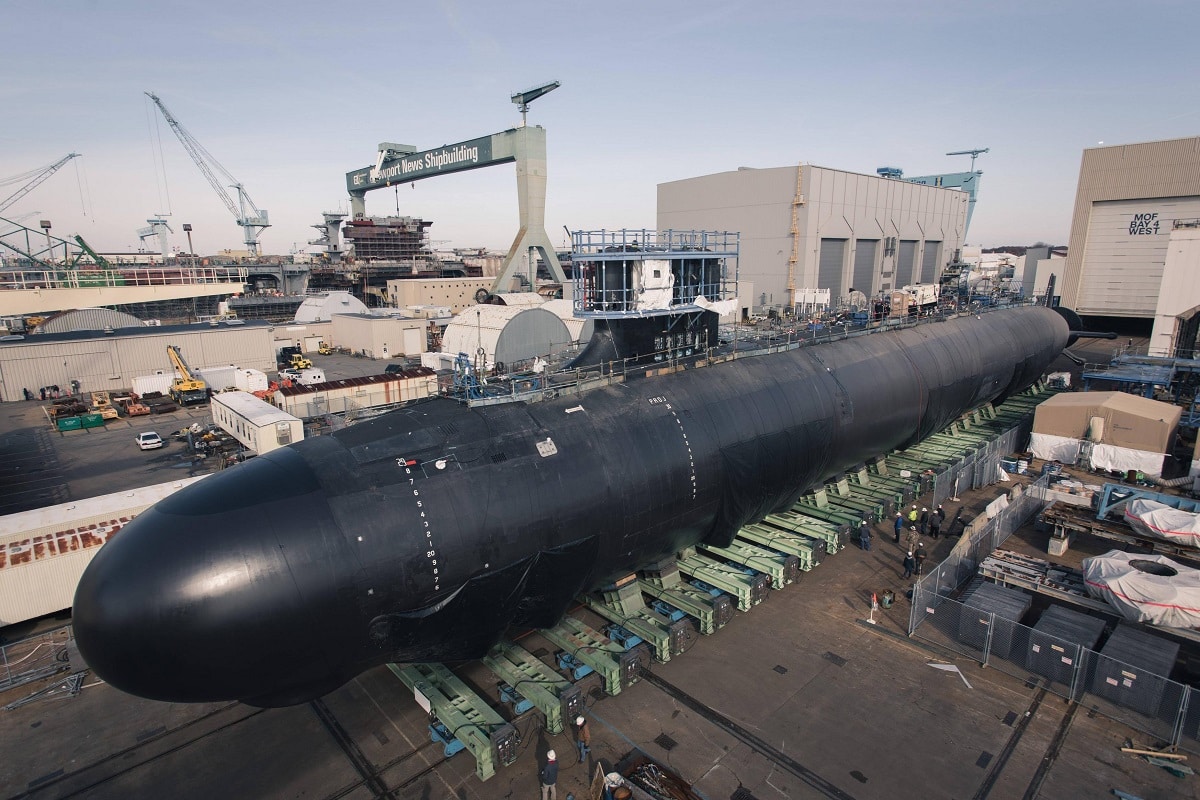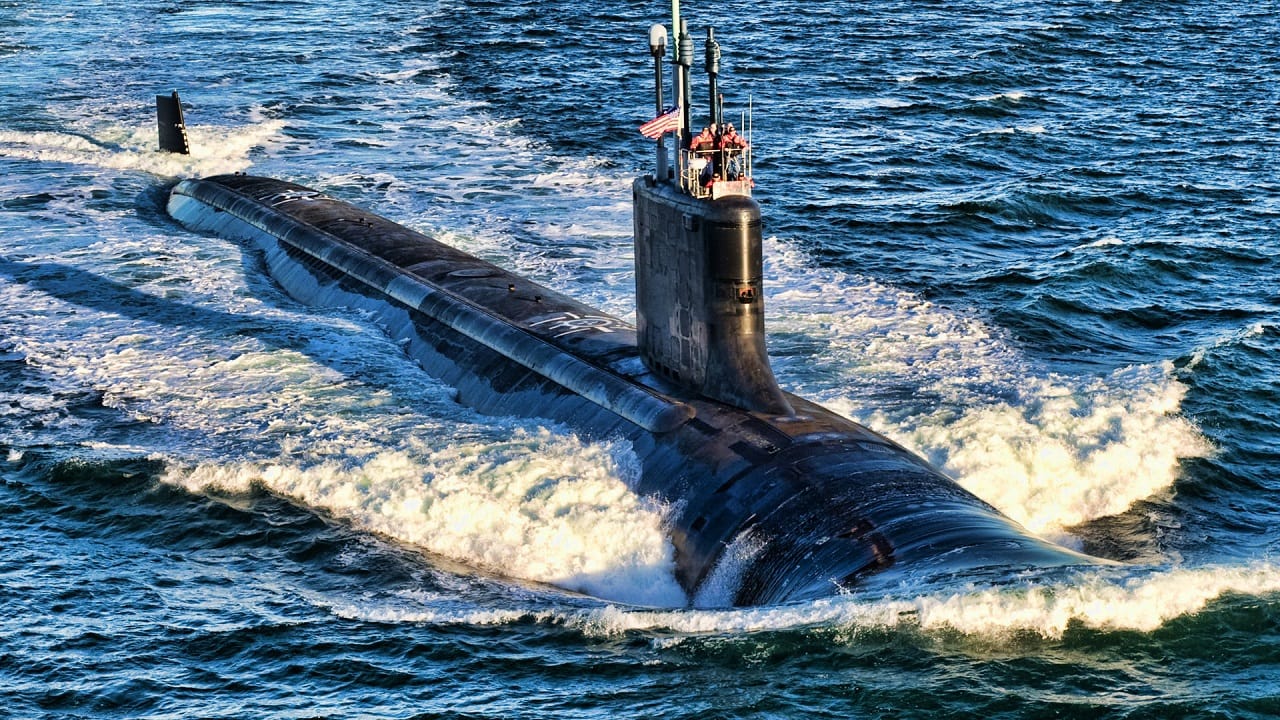The AUKUS partnership between the United States, the United Kingdom, and Australia stands as one of the most consequential defense agreements of the 21st century.
At its core lies the ambitious endeavor of equipping Australia with nuclear-powered submarines, a move designed to enhance its military capabilities and solidify its integration with the United States and the UK. Yet beneath this promising vision, a stark reality emerges: the U.S. Navy is already struggling to meet its own submarine production needs.
Given this challenge, can AUKUS withstand the strain if the United States continues to falter in delivering the attack submarines it requires? More pressingly, what measures can be taken to fortify the American defense industrial base to accommodate these growing demands?
The AUKUS Dilemma
The U.S. Navy operates a fleet of roughly 50 attack submarines, primarily composed of Virginia-class and aging Los Angeles-class vessels. Strategic planners have long warned that this number is inadequate in the face of intensifying great-power competition, setting a goal of 66 attack submarines.
However, the path to achieving this target is mired in difficulties. Production delays have already hindered the Navy’s ability to receive the two Virginia-class submarines it expects annually, with reality reducing the pace to barely more than one per year. Labor shortages, supply chain disruptions, and inflationary pressures have compounded these setbacks. Maintenance backlogs further exacerbate the situation, with too many submarines languishing in dry dock rather than patrolling the seas. If the United States struggles to sustain its own fleet, how can it realistically commit to supplying Australia with additional boats?
Under the current AUKUS framework, Australia is slated to acquire three to five Virginia-class submarines from the United States in the 2030s before transitioning to a co-developed SSN-AUKUS class alongside the UK. This plan, while ambitious, hinges on the assumption that the American industrial base can shoulder both its domestic obligations and international commitments. That assumption appears increasingly fragile.
If the United States cannot fulfill its own naval needs, diverting submarines to Australia could further undermine American strategic readiness. Britain, theoretically an alternative supplier, lacks the necessary shipbuilding capacity, with its own submarine programs already facing chronic delays.
Australia, therefore, finds itself in an uncertain position, its future fleet reliant on an industrial infrastructure that appears ill-prepared for the task ahead.
How to Make This Work
For AUKUS to succeed, the United States must undertake a comprehensive expansion of its submarine-building capabilities. A shortage of skilled labor remains one of the most significant obstacles. Strengthening workforce recruitment and retention at shipyards such as Electric Boat and Newport News Shipbuilding must become a priority, with better pay, enhanced training programs, and stronger partnerships with technical institutions providing viable solutions.
Beyond labor, the supply chain itself demands resilience. The procurement of specialized components, such as reactor parts and high-grade steel, remains precarious, underscoring the need for investment in domestic manufacturing and a reduction in reliance on foreign suppliers, particularly those based in adversarial nations. Just as pressing is the necessity of addressing the Navy’s maintenance backlog, ensuring that existing submarines are kept in operational service rather than sitting idle in dry docks.
To meet these ambitious goals, production facilities must be modernized, equipped with state-of-the-art automation and expanded capacity. Without such improvements, existing bottlenecks will persist, rendering it nearly impossible to meet both American and Australian requirements.
All of these efforts, however, hinge upon a stable and predictable defense budget. Uncertainty, political wrangling, and the specter of sequestration have historically jeopardized military procurement, making sustained congressional support imperative for AUKUS to reach fruition.
Sinking Feeling
The broader implications of failure would extend beyond AUKUS itself.
The United States’ credibility as a security guarantor would be at stake, not only in the Indo-Pacific but across the global network of allies and partners that rely on American military commitments. If Washington cannot meet its obligations to a close ally like Australia, how can it reassure others in Asia and Europe that it remains a reliable strategic partner? The erosion of American credibility would embolden adversaries, particularly China, whose naval expansion is already tilting the regional balance of power. A reduced U.S. submarine force would diminish deterrence, allowing Beijing greater freedom to assert its territorial claims in contested waters, potentially at the expense of Taiwan and other U.S. allies in the region.
Australia, too, faces strategic uncertainty should AUKUS falter. Without nuclear-powered submarines, it would struggle to project power and defend its vast maritime interests against rising regional threats. The Australian government has already made significant financial and political commitments to the deal, banking on its success to secure long-term defense capabilities. If delays or failures on the U.S. side derail the plan, Canberra may be forced to reconsider its defense strategy, either seeking alternative partners or reverting to conventionally powered boats—a costly and strategically inferior option.
Compounding these concerns is the question of how prepared the Australian defense sector is to receive and sustain nuclear-powered submarines. While the AUKUS deal promises deep technological integration, much work remains in ensuring that Australian shipyards, personnel, and regulatory frameworks are ready to support and operate these advanced vessels. The United States and the United Kingdom must work closely with Australian counterparts to build the necessary infrastructure, transfer expertise, and establish long-term sustainment plans. Any shortfalls in these efforts could hinder Australia’s ability to field a capable submarine force, weakening the broader goals of AUKUS.
How to Make AUKUS Work for the Longterm
If AUKUS is to succeed, then decisive action is needed. The United States must prioritize serious industrial reforms, ensuring that shipbuilding capabilities align with strategic commitments. This requires sustained investment in workforce development, supply chain resilience, and infrastructure expansion. Australia, for its part, must accelerate efforts to build the domestic capacity required to integrate and operate nuclear-powered submarines effectively.

U.S. Navy Virginia-class Submarine.
Without such steps, AUKUS may ultimately fall victim to its own overpromising—a vision too ambitious to be realized under current constraints.
AUKUS remains a visionary agreement with the potential to redefine security partnerships in the Indo-Pacific, yet its realization depends upon more than diplomatic goodwill and high-level pronouncements. Without tangible and immediate investments in shipbuilding capacity, workforce development, and supply chain resilience, it risks becoming an empty promise.
The United States cannot afford to sacrifice its own naval strength while simultaneously failing to meet its commitments to Australia. If Washington is serious about AUKUS, it must undertake the necessary reforms without delay. Otherwise, the most significant defense agreement in recent memory may unravel before it ever fully materializes.
About the Author: Andrew Latham
Andrew Latham is a non-resident fellow at Defense Priorities and a professor of international relations and political theory at Macalester College in Saint Paul, MN. Andrew is now a Contributing Editor to 19FortyFive, writing a daily column.

